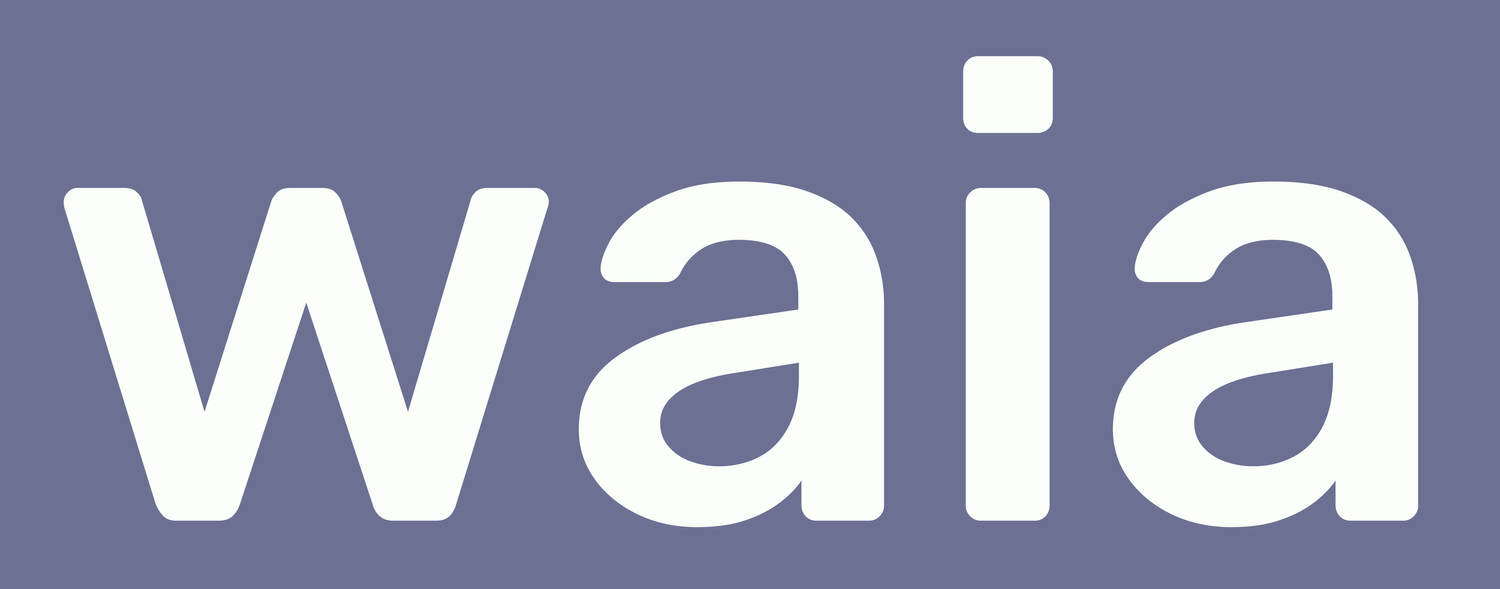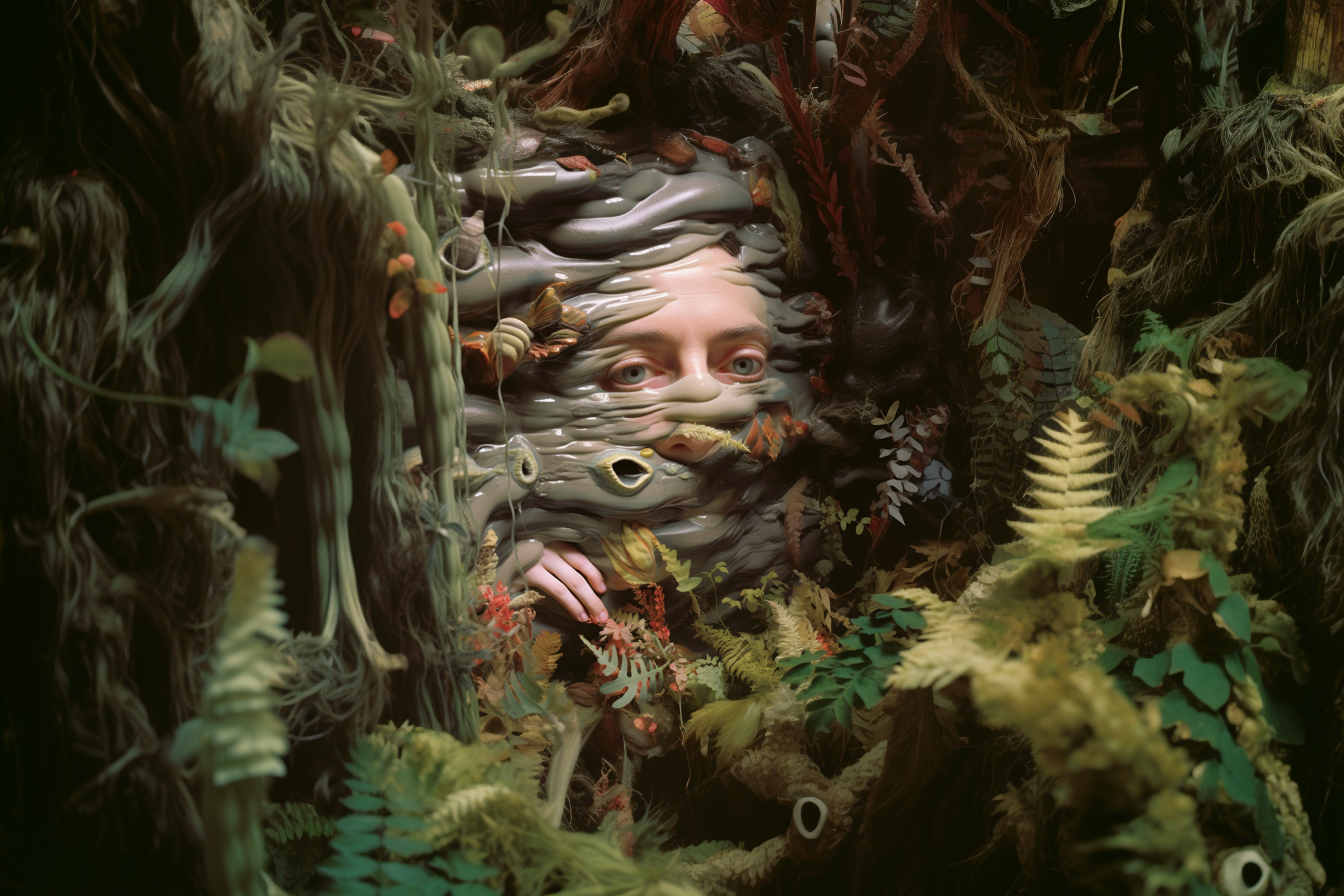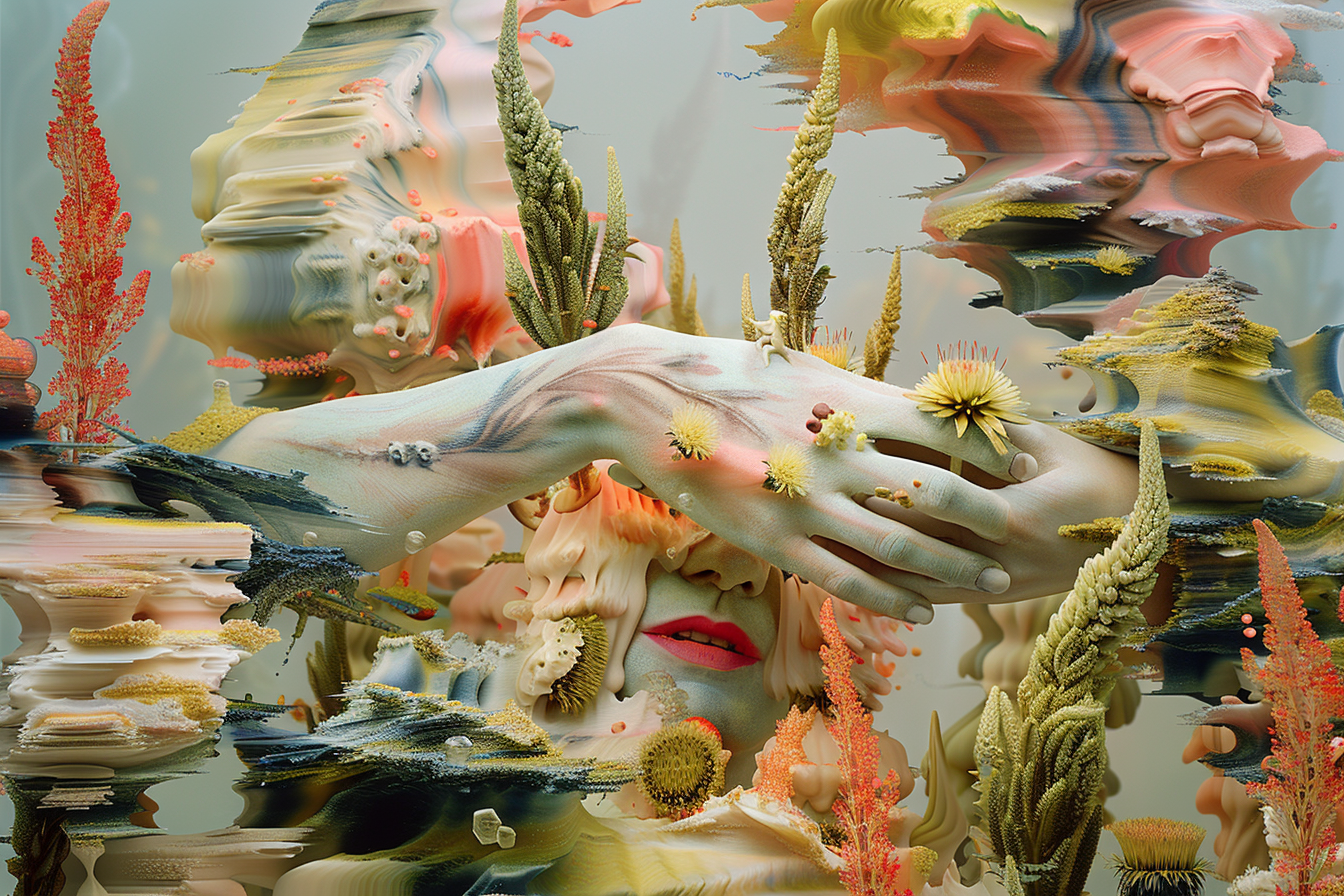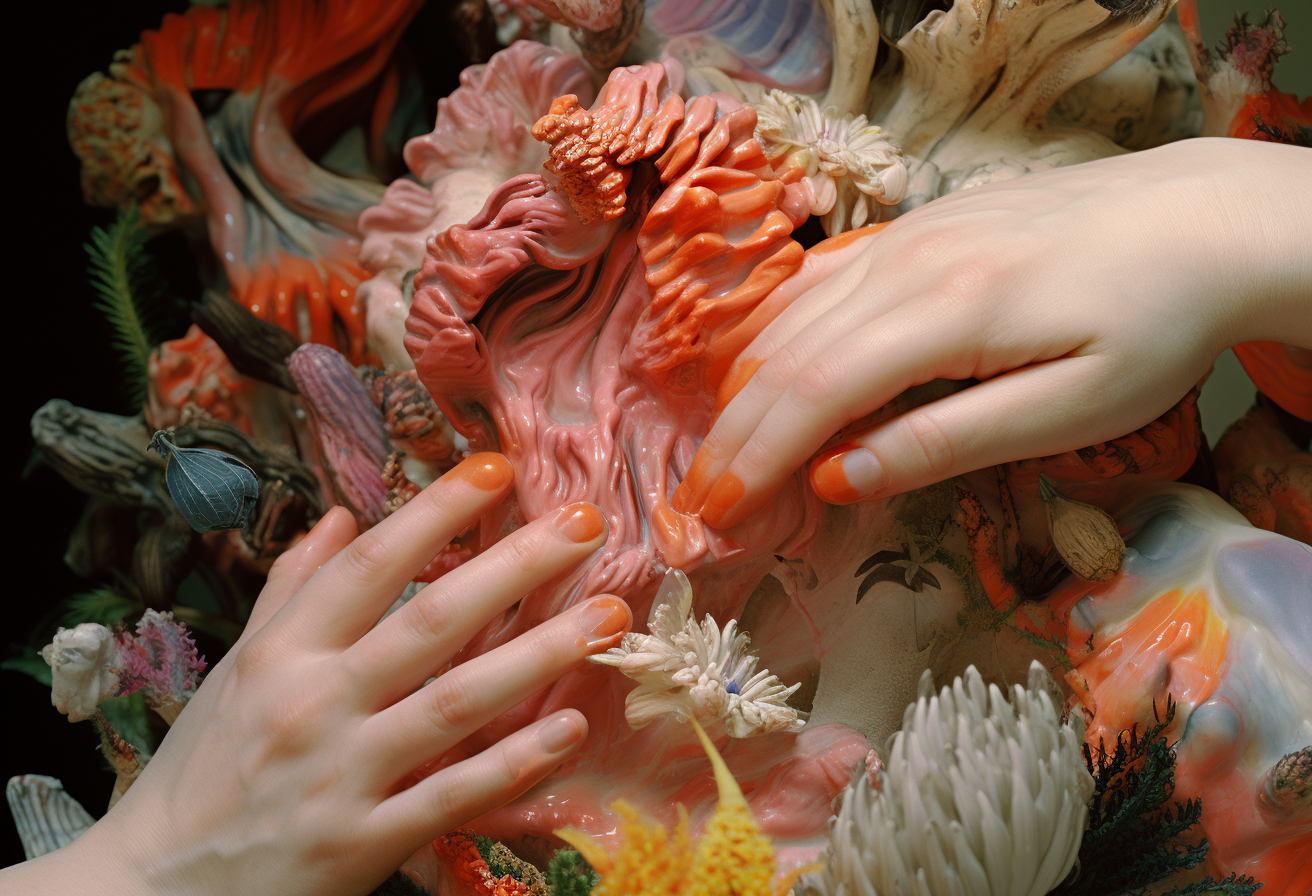Meet Maddy!
Maddy (IG: @camaronadormida), is a nomadic environmental photographer and artist whose passions for mountaineering and diving deeply inspire her evocative digital creations. Her vibrant yet dark pastel artworks merge the raw beauty of nature with surreal, glitched dreamscapes. Maddy's layered textures and sense of wonderment transform landscapes into abstract dioramas that feel simultaneously familiar and foreign. Through her innovative mixed media approaches combining AI, photography, and analog techniques, this globetrotting artist forges a distinctive voice that challenges perceptions while celebrating the unexpected harmonies emerging from life's contradictions.
Can you tell us a little bit about yourself and how you got interested in AI art?
I am an environmental photographer and motion graphics artist. I live nomadically to pursue my passions in mountaineering and diving, while making a living creating digital content for projection-mapped installations. They are somewhat contradictory fields but AI was the priest to marry them together for me.
I discovered AI in early 2023, while I was stuck at home with some health issues. I had followed Charlie Engman as a photographer for years and when I saw some of the AI stuff he was doing I realized it could be so much more than just the cartoons and deep fakes I had associated with it. I didn’t know you could input your own work. I was instantly hooked, my curiosity went into overdrive, and I had to get glasses because I was staring at the computer with such prolonged intensity.
Who or what are your artistic inspirations, and if you had the opportunity to collaborate with any artist, who would it be, and why?
Nature is my favorite art. I first fell in love with high desert badlands and have been working my way down to the bottom of the ocean and back since. I’ve just arrived in Bolivia for a dream collaboration with the volcanoes here.
I love those deep sea videos with the rigid camera panning across the puke green sea floor covered in semi-transparent creatures, warping all sense of time and space. I love old film photos of archeological artifacts and 19th century expeditions. I love small things, piles of things, messes, absurdities, precious oddballs that can’t help themselves. My style is a direct reflection of the liminal nature of the life I’ve lived. I am full of dualities, have never properly fit anywhere, and relish in the harmony I’ve found in the surreal and seemingly incongruous spaces I inhabit.
Some of my favorite photographers right now are Trevor Hernandez, David Brandon Geeting, and Nico Krijno. Just in Mexico City I’ve found so many talented artists: Mateo Pizarro, Allan Villavicencio, Juana Subercaseaux, Sebastián Silva, Daphne Lyon, Horacio Quiroz…my list never ends.
How do you approach the creative process when working with AI?
I’ve developed a process of taking photos, printing them out, scanning/manipulating them, scanning other objects, and bringing everything back together again in Midjourney (and repeating that process with those outputs as much as necessary). This digital/analog approach is refreshing to me, folding the dough between a physical and logarithmic space until the line between the two disappears. Truly, whether it’s photography or AI, the process of making it is everything for me. After that it’s kind of in the air and I struggle to push it forward. I just move on to making something else, I enjoy the active engagement and living conversation.
I get overwhelmed with AI quite often and find getting away from the computer and taking photos again to be the best reset for me. It’s also really fun to “play” with AI with your friends. Having an absurd conversation with this tool always yields unlikely results and might inspire something new.
Can you share a specific artwork or moment that transformed your perspective on AI art?
I would love to share so many, it’s such a fundamental fun of AI. The first time I used one of my photos with Midjourney and turned it into a diorama it blew my mind. It was something in my own vision, but in dialogue with something else both foreign and familiar. I think my jaw literally dropped and my head tilted like a puppy. I remember when it fractalled out as the only way to digest what I fed it, and that resembled a human mental process. The first results from the scanning experiments opened my eyes to the potential for abstraction. I’ll share this early v4 piece where I finally got it to create a sort of 3 dimensional glitch that was exactly what I was hoping for and more. It’s so hard to actually get what you’re asking for and I’m still trying to refine this effect.
How do you balance your work in AI art with other professional or personal pursuits?
I’m swinging on a thread! I’m no good at multitasking or balancing a social life or making money so I kind of have to isolate myself and create voids. I have settled into a pattern of starting the year in Mexico City (to get my fill of friends and modern society), summer and fall traveling, and winter holidays with my family in the US.
Right now I’m alone in South America for the next 6 months. So I’m working and training during the week, climbing mountains on the weekends, and then any evening when I’m not too tired I work on my art. Springtime in the city seems to be the best place to digest my experiences with nature and work to manifest them in a new way. Again it’s a method of isolating myself from one thing to create space for growth and new life somewhere else. I am a hermit so this all works great for me. A homeless homebody doesn’t make much sense but I find my way.
How has working with AI in art influenced your mental and emotional wellbeing?
AI woke something up inside me and brought me back to life. It came to me at a time when I was unable to get outside and shoot photos, when I lacked a creative outlet and felt a bit hopeless. It pushed me to rethink how I could use what I had already created to make something new again. Maybe it’s more like art directing but my touch is still very present. I’m able to reprocess my visceral engagement with the wilderness with my intuitive digital understanding and what comes out is like nothing I’ve ever seen before but still feels like my own voice.
In your opinion, how does AI redefine the concept of creativity and artistic agency, and how do you see it impacting the future of art?
I think a lot of people’s aversion to AI is rooted in ignorance or fear (insecurity). I definitely frowned upon it at first, but have a better understanding now of the ways it challenges you. As a photographer and artist I have never felt a threat from AI. Maybe it’s because I believe in my vision and my experience. I don’t think it matters the means we use to express that, it will always be unique to each individual. You can copy others’ work through any medium you choose if that’s what you’re trying to do. It’s usually pretty obvious and people will always do that.
Photography went through a similar period of doubt about its merit and worth. Then cellphone cameras made everyone a photographer, and a lot of people are “very successful” following a certain formula. But that doesn’t take away from the truths that photography can share with us. In no way does the massive influx of terrible photos take away any value from what other artists have created with their camera. Like a camera, a computer, a paintbrush, or a vacuum cleaner, AI is just a tool. What we choose to do with it matters more than what it is. I don’t know that I have a place in the future of AI but I just really like to play with it.
For more of Maddy’s incredible work, make sure to visit her Instagram account: @camaronadormida








